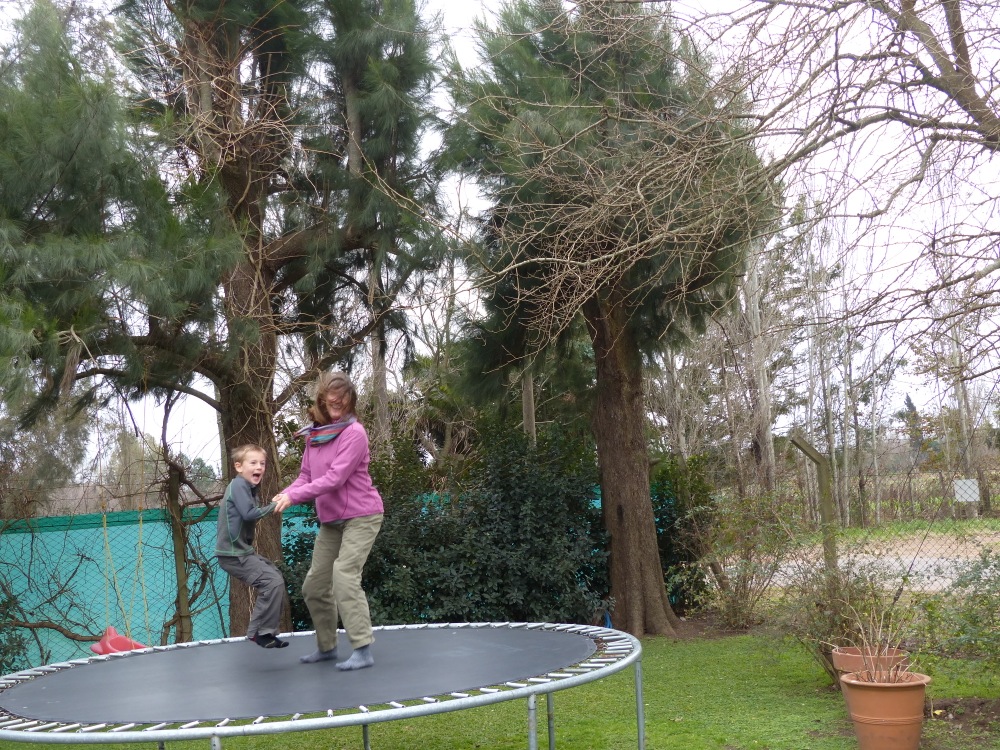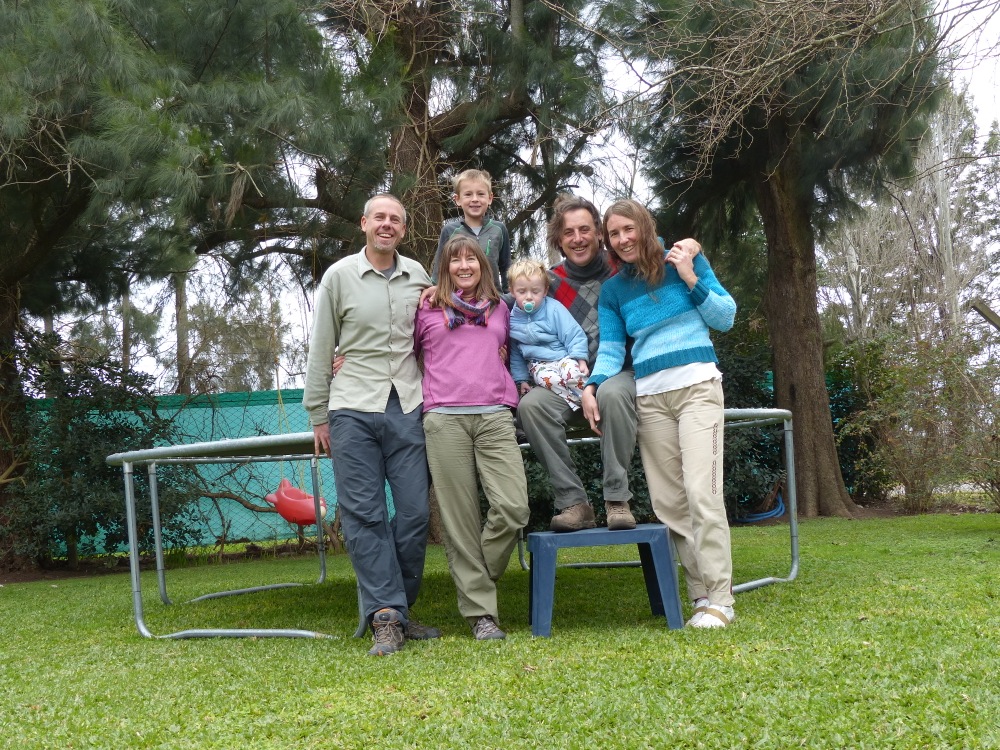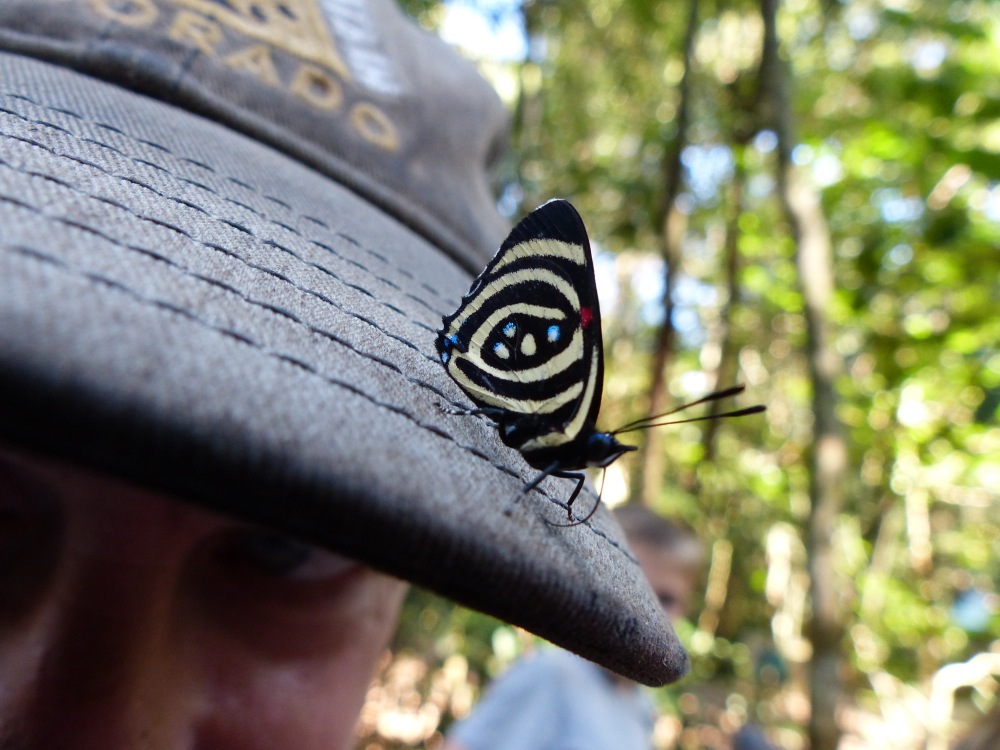After spending so much time at high altitudes with dry, cold weather, we were looking forward to getting to Buenos Aires at sea level, where we thought it would be a little warmer. It was more humid, but at 34 degrees south latitude, it’s still on the chilly side.
We arrived in the Buenos Aires region and found the home of the amazing Herman Zapp family, who have been traveling for 15 years in a vintage car. They are currently in East Africa, but invited us to stay at their home outside Buenos Aires while we attempted to get our fridge repaired. Their home is being taken care of by Herman’s cousin, Eduardo, and his wife, Clarita, and their son, Gaspar. They gave us a very warm welcome and made us feel at home right away, even sharing meals with us.
By the second day we were there, Eduardo had already located someone who thought he could help with our fridge. Not wanting to send us out into BA traffic alone, he rode in the back of the van and directed us to the proper address. José, the fridge guy, was very helpful and to our great surprise had the original replacement compressor for our fridge in his shop. It wasn’t cheap, since imported parts in Argentina carry a 50% import duty, but the prospect of a working fridge in 3 days’ time was too good to pass up and we asked him to do the work.
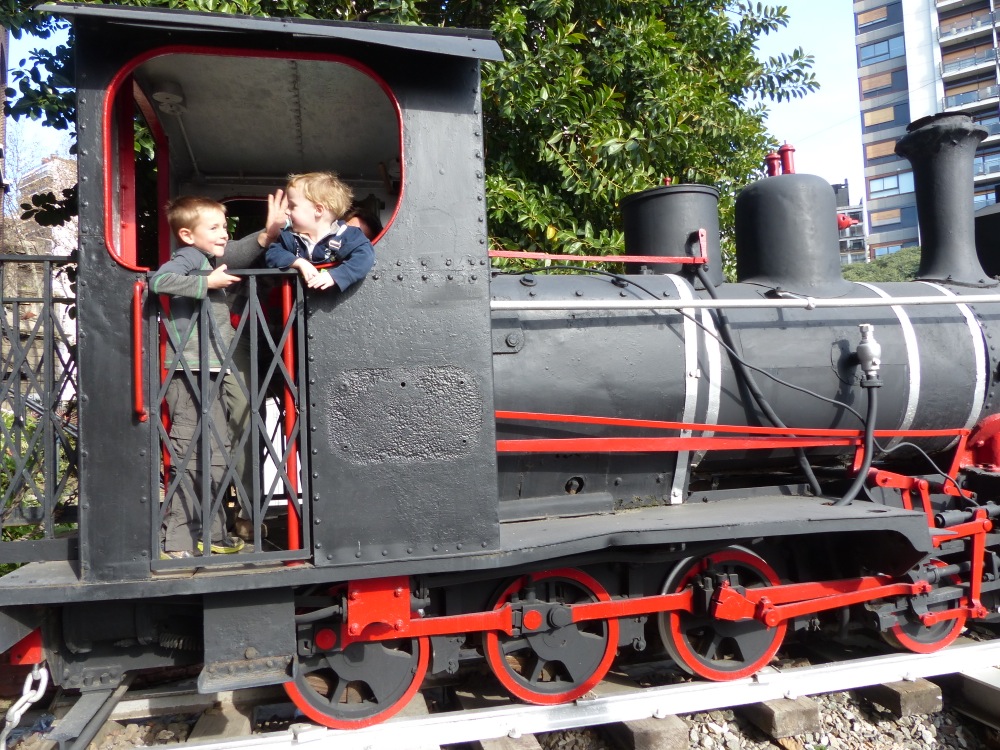
We took a local commuter train into the city to visit a railway museum there. Unfortunately it was closed for a holiday, but at least there was a steam engine out front to play on.
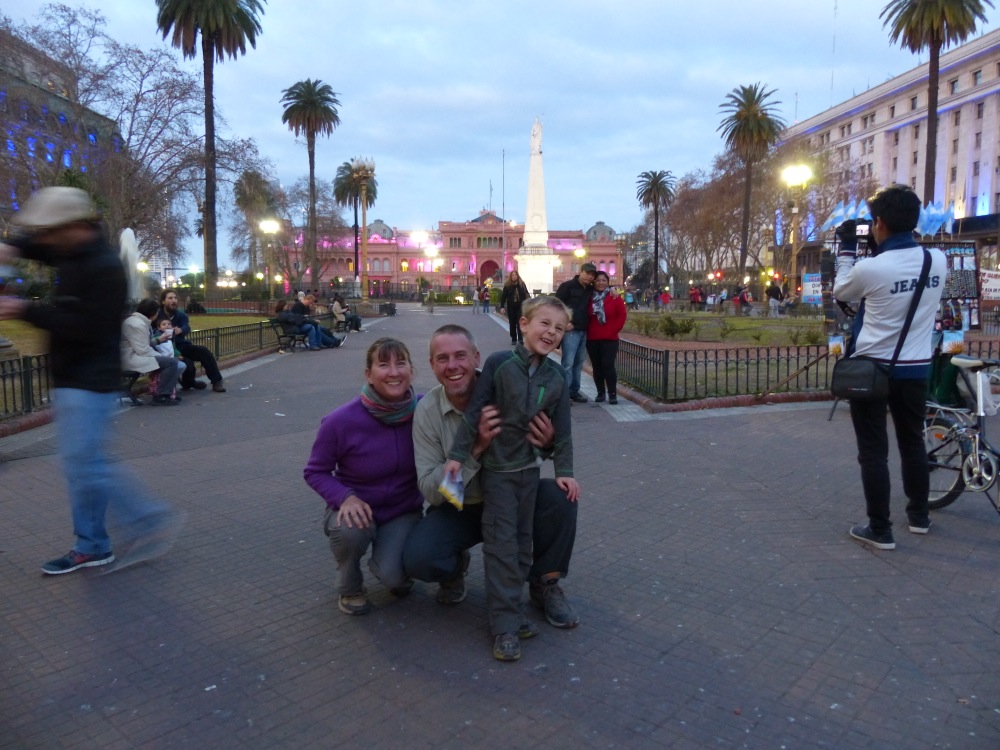
Eduardo and Clarita took us on a wonderful tour of downtown BA. It was their independence day holiday, and we enjoyed some of the festivities.
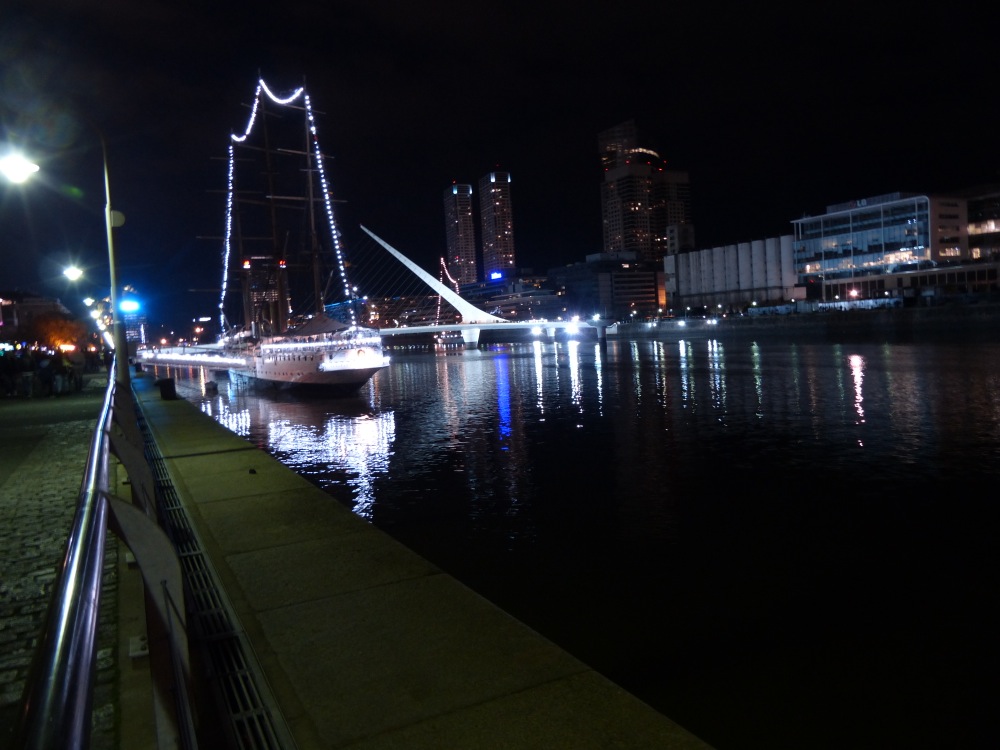
The original port has been gentrified into a pedestrian walkway with restaurants and expensive waterfront condos.
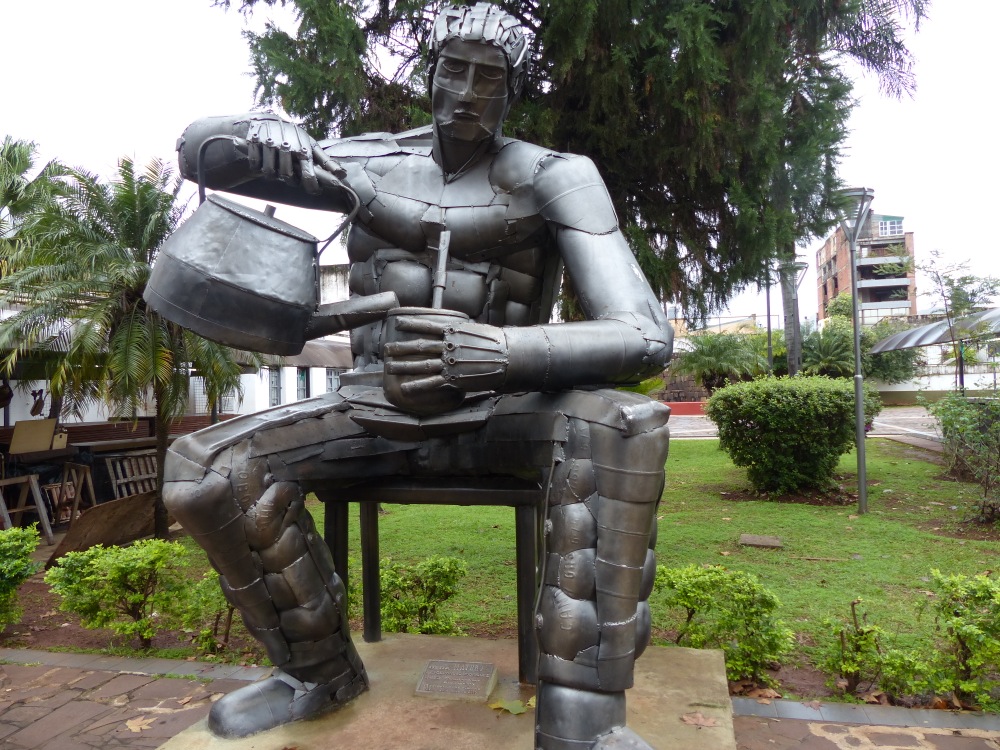
Argentinians love their yerba mate, a tea made from herbs and drunk from special mugs. It’s common to see them toting around a thermos of hot water for making the tea.
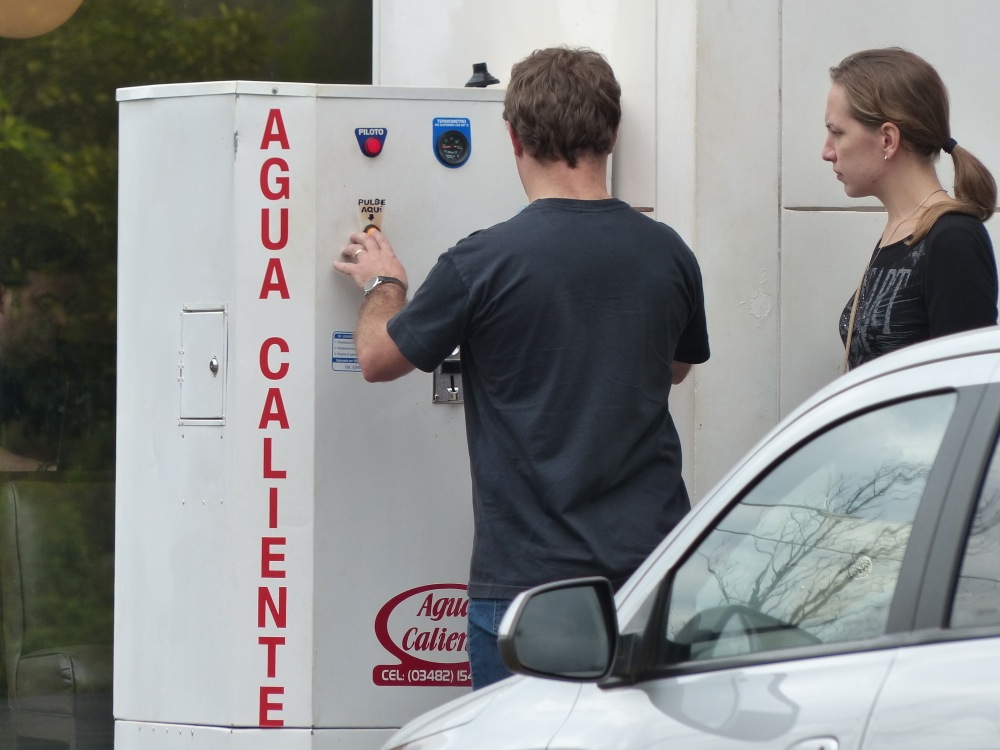
Many gas stations offered a hot water dispenser where folks would re-fill their thermos for the road.
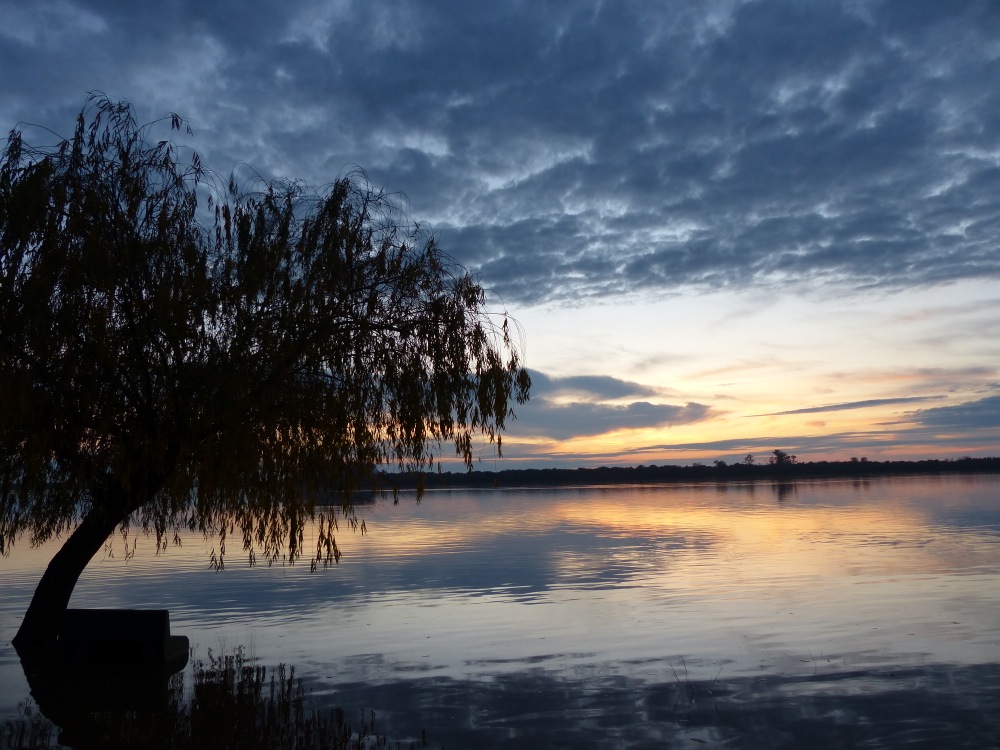
From Buenos Aires it took us three days to reach the border with Paraguay at Posadas. We enjoyed a nice campsite along the river en route.
After about 24 hours spent getting Paraguayan visas, we crossed the border into the Paraguayan town of Encarnación. Jen found a recommended mechanic on iOverlander, and we decided to stop to get our oil changed. While that was getting done, we walked to a nearby supermarket to stock up on groceries and even found an ATM machine that dispensed US dollars to replace those we’d spent in Argentina. All in under an hour! We were able to leave town that day and make it to a very nice campsite in the countryside.
Although it was still very overcast and rainy, the drive up the eastern side of Paraguay was very pretty. There were fields of soy beans everywhere, along with lots of tractor dealerships offering expensive new equipment. Signs for the likes of infamous agro-businesses like Cargil and Monsanto were everywhere, and we wondered what kind of genetic experiments they’re doing down here. We learned later that Paraguay is the world’s third largest exporter of soy beans.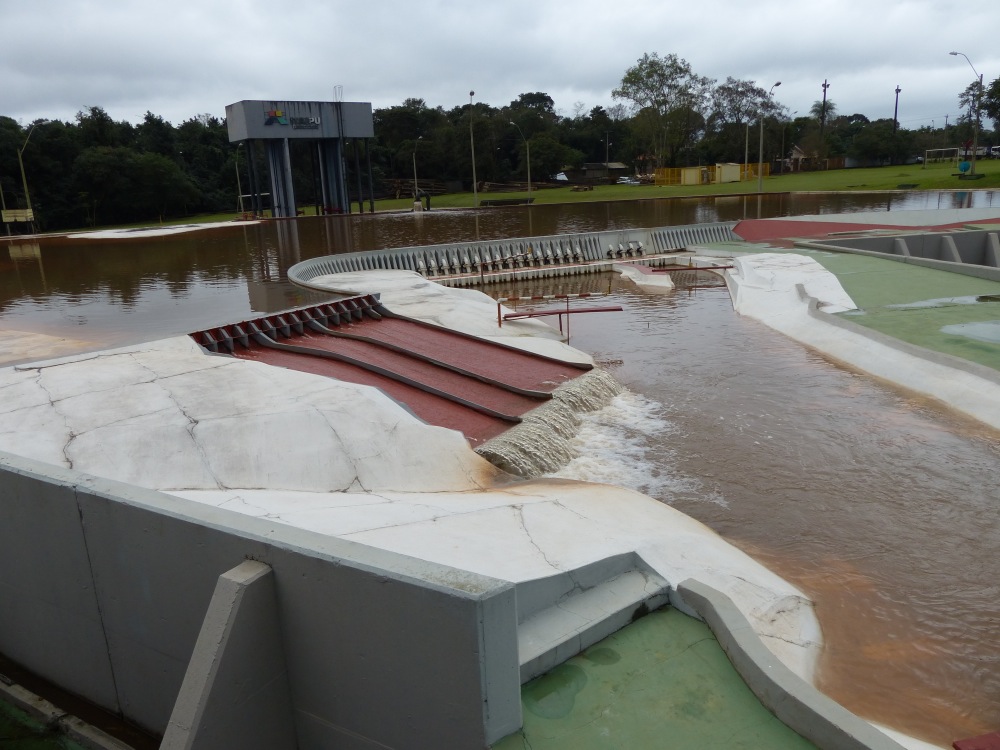
We took the opportunity while in Paraguay to visit the Itaipu dam, the world’s second largest hydro plant. This is a 1/100 scale model of it built during construction. In 2013, the dam produced over 98 TWh, supplying 75% of Paraguay’s electricity needs and 17% of Brazil’s.
And leave we did, for the Brazilian city of Foz de Iguaçu. Everything was suddenly much more orderly on the Brazilian side, with actual traffic lights and drivers who obeyed them. We were happy to arrive at a hostel / campground near the national park that is home to the famous waterfall.
The next afternoon we went to visit the park. It being a weekend, there were lots of visitors, and we ended out standing in lines for tickets and bus rides to various parts of the park. It was worth it though, as we had a beautiful day to enjoy the falls.
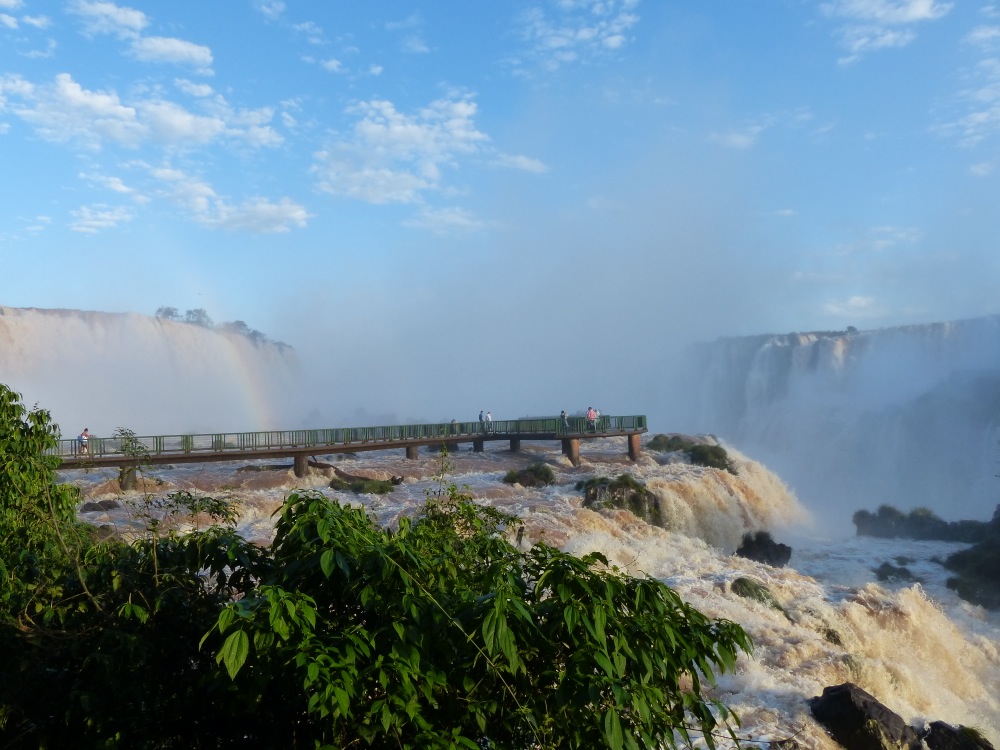
This video provides a good overview of what the falls look like from the air (since we decided not to spring for the helicopter flight)


